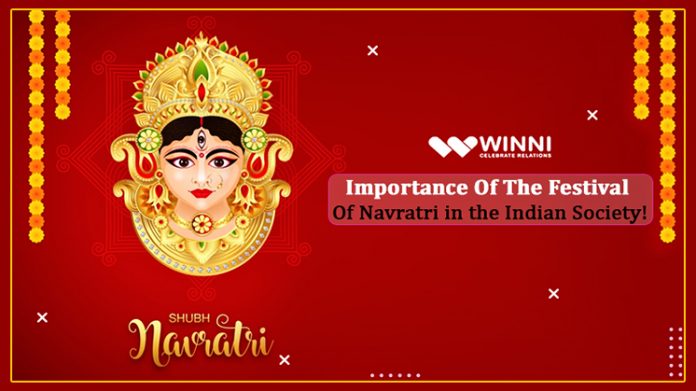Navratre or Navratri puja is one of the most auspicious festivals that is widely celebrated across the globe by all Hindus. The word Navratri is derived from the Sanskrit words ‘Nava’ means nine and ‘Ratri’ means night. Each day of the Navratri is associated with the different avatars of Goddess Durga and each day also has its own color significance.
The beginning of the celebration of Navratri is as old as the beginning of the human race. It is said that the festival is celebrated to commemorate the victory of the Good over the Evil. The story goes as Goddess Durga fought with a mighty and powerful demon named ‘Mahishasura’ who symbolized egotism over the course of nine days and finally beheaded him on the tenth day, which is also known as ‘Vijayadashmi’ that translates to ‘Vijaya’ meaning win and ‘Dashmi’ that means on the tenth day.
The festival of Navratri falls four times a year. Still, the ones that fall in March or April (Vasant or spring season) and September or October (Sharad or autumn season) are considered the most auspicious ones. They are widely celebrated in different unique ways in various parts of India.
Each region of the country tends to celebrate the festival of Navratri in unique ways. The rituals about the festival vary from state to state. The festival of Navratri is famous with different names in different parts of the country. It is commonly known as ‘Durga Pujo’ in the northeast of India; in most parts of northern India, ‘Ramlila’ is enacted over nine days, and the tenth day is observed as the win of Good over the Evil. The effigies of the demon ‘Ravana’ and his brothers are burnt. In the southern part of India, mainly Tamil Nadu, Navratri is celebrated as ‘Golu.’
Let us have a look at the various traditional ways of Navratri celebration throughout the country.
Fasting:
Fasting is one of the prominent traditions that is commonly followed in Navratri. Though fasting is an individual choice, many people observe a fast for all nine days and open their fast on the tenth day that is Vijayadashmi. The people observing fast tend to abstain from having non-vegetarian food, eggs, alcohol, etc. The people fasting enjoy only a limited variety of food which mostly tends to include fruits, potatoes, etc., that does not limit one from experimenting with the fasting cuisine. One can have a lot during fasting for the Navratri: the mighty sabudana (Sago), khichdi and kheer, makhana (Fox nuts), potatoe, etc.
Flowers:
Navratri is usually celebrated outdoors by incorporating huge pandals in the locality and setting up a subtle yet eye-catching décor. Various ways of decoration are followed across the country to celebrate Navratri. Flowers are most widely used to decorate the pandal space and create a beautiful setup. Arrange for an online flowers’ delivery at your doorstep to enjoy the festival hassle-free and get the perks of ordering a wide range of flowers with a single click, without having to stroll in the local market to arrange for the flowers.
Roses, jasmine, marigold, chrysanthemums, hibiscus, lotus, etc., are some of the commonly used flowers for Navratri decoration. Flowers are extensively used to make beautiful and attractive garlands to be offered to the deity, marigold being the most common flower to be used. One can get online flower delivery for the beautiful marigold flowers and make garlands themselves and decorate the worship place. The flowers are of much importance when performing the Puja (Worship) of the goddess. Various heavenly fragrant flowers are offered to the goddess and are considered an integral part of Hindu worship; for example, Lotus is one of the most beautiful flowers and is offered to Goddess Lakshmi (The Goddess of wealth).
Fun and Frolic:
Navratri is also celebrated by dancing your heart out for all nine days, followed by Dussehra. The dance forms called dandiya and Garba are the most renowned and fun part of celebrating Navratri and are most famously played in the Gujarat state of India. The dandiya or the wooden sticks used to signify the sword of the goddess (One of the reasons it is called the sword dance) and is usually played after the Aarti of the deity has taken place. The dance form called Garba is usually played with hands by clapping rhythmically while the people move around the idol of the goddess in a circular manner. Both Dandiya and Garba are some of the most colorful dance forms played and are enjoyed after dressing up traditionally. Apart from being a part of the celebration, these dance forms also signify the fight between the goddess and the demon.
The festival of Navratri is not just a symbolization of the win of Good over Evil but it also contributes towards increasing communal harmony and contributes to celebrating the rich cultural heritage of our very own India.




